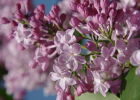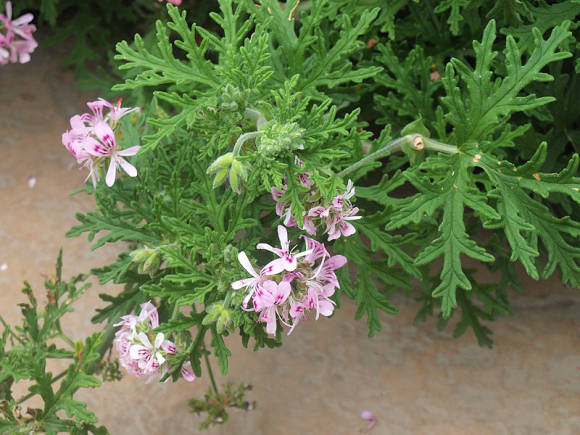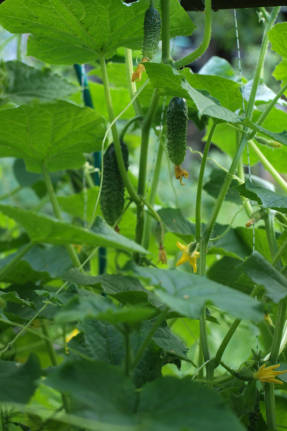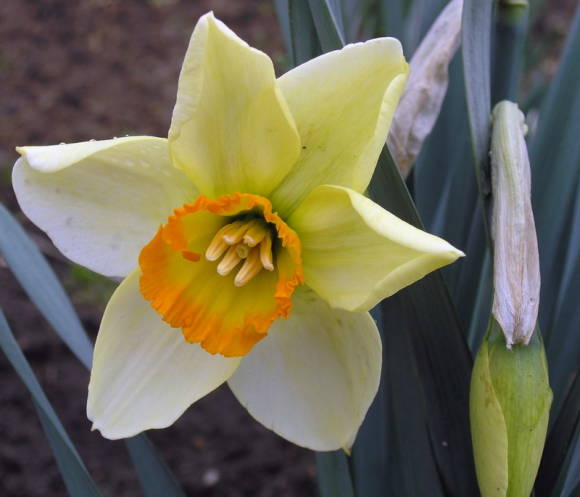
Gardeners often refer to the scilla as their "favorite weed." These flowers from the hyacinth family are widespread because they adapt perfectly to different conditions. In addition, they grow well and reproduce in shady places, characterized by frost resistance and excellent appearance.
The leaves are linear, leafless peduncles. The flowers are blue, purple, white, or pink; they are collected in inflorescences or are located singly. The bright flowers of the scyllas give the flower garden a special unique look.
Word Scilla translated from ancient Greek means "sea bow". Numerous scilla species grow abundantly in Europe and Asia.
 |  |  |
Most often in gardens, Siberian beetle is found. (Scilla siberica), which has broad-linear radial bright green leaves. It is a plant with bright blue flowers that bloom in mid-April.
Less common is the amazingly beautiful form of "Alba" with snow-white flowers.
The most abundantly flowering and undersized of the forest stands is two-leaved scrub (Scilla bifolia) - possesses, in addition, a strong pleasant aroma. Her flowers can be blue, pink or white, and their number in an inflorescence is from 3 to 15 pieces.
Scylla blooms in April following the melting of snow for 15–20 days, and the buds with leaves appear two weeks earlier. Its small flowers, similar to drooping bells, are collected in 20-30 pieces per peduncle.
Growing
In one place, Scyllas are grown for 5–6 years. During this time, they grow strongly and give a large number of peduncles, which creates a decorative effect. All scillas are very good for small spring bouquets. They are suitable for forcing, especially for the New Year, which is especially valuable for gardeners.
The scilla bulb is broadly ovate, 2-3 cm in diameter. During the season, the mother bulb forms 3-5 babies. After a year, young bulbs form flower arrows, and at the age of two they are suitable for forcing.

Landing... Scylla easily tolerates transplanting even during flowering. However, the bulbs must be harvested during the yellowing of the leaves, and planted in the ground in late August - early September.
The plant is winter-hardy, hibernates without shelter, but grows in open places, so it's better to cover for the winter.
Growing conditions... Scales love shady places, but they grow no worse in lighted areas. They prefer loose, moist and fertile soil, but they can also grow on heavy soils with the addition of humus in areas with little shade. Perhaps the only thing that the scrub cannot adapt to is the acidic swampy ground. If the land suits her, the scrub will grow in one place for decades.
Reproduction... Scyllas reproduce well by seeds. Immediately after cracking the seed pods (approximately at the end of the first decade of July), the seeds must be collected and immediately sown into the ground, because they lose germination extremely quickly. Moreover, the spines give abundant self-seeding, therefore, in good conditions, they quickly spread throughout the garden. When growing tree branches in flower beds, it is necessary to remove the testes in a timely manner, preventing the seeds from spreading.
Scylla and ovoid bulbs easily multiply. To do this, they are seated in the second half of the summer. The bulbs form up to 4 peduncles up to 15-18 cm long.
It is worth replanting and dividing woodlands no earlier than 3 years after planting, while they can be transplanted during flowering, there will be no harm from this to the plant, the main thing is not to dry out the roots. When planting woodlands, try to maintain the recommended distance of 5–6 centimeters.
The most optimal time for planting forest trees is after the leaves die off, so you will avoid even a small risk, the calendar time is usually June or early July.
Care... Carpets are unpretentious, do not require special care. In order for them to bloom better, in early spring they must be fed with nitrophos.After watering, the soil should be loosened to a depth of 2–2.5 cm and covered with deciduous humus.
Using tree sprinkles in garden design
High decorativeness allows widespread use of the scilla in various types of flower decoration. One of the first to bloom, they will decorate the garden after winter. The spines grow very quickly and form beautiful blue clumps under trees or on lawns, which are wonderfully combined with clumps of white snowdrops and early yellow crocuses.

Scales are absolutely irreplaceable on alpine hills, they are in perfect harmony with stones, therefore, like many early spring small-bulbous ones, they are planted in rocky gardens. You can also plant them in groups on the lawn, in ridges, curbs, mixborders and even in the trunk circles of fruit trees.

Blooming scillas are especially good in combination with other perennials, for example, with peonies, when the leaves of those have not yet had time to unfold. They are often used in cuttings to compose spring bouquets.
Forcing the forest
Scyllas are also suitable for distillation. To do this, it is necessary to plant them in a pot in the fall, arranging two or three pairs of plants in each, and put them in a dark and cool place where there is no negative temperature even in winter (in the basement). In February, the pots should be transferred to a windowsill or to another bright place with a temperature of about 12 ° C.

"Ural gardener", No. 16, 2019









